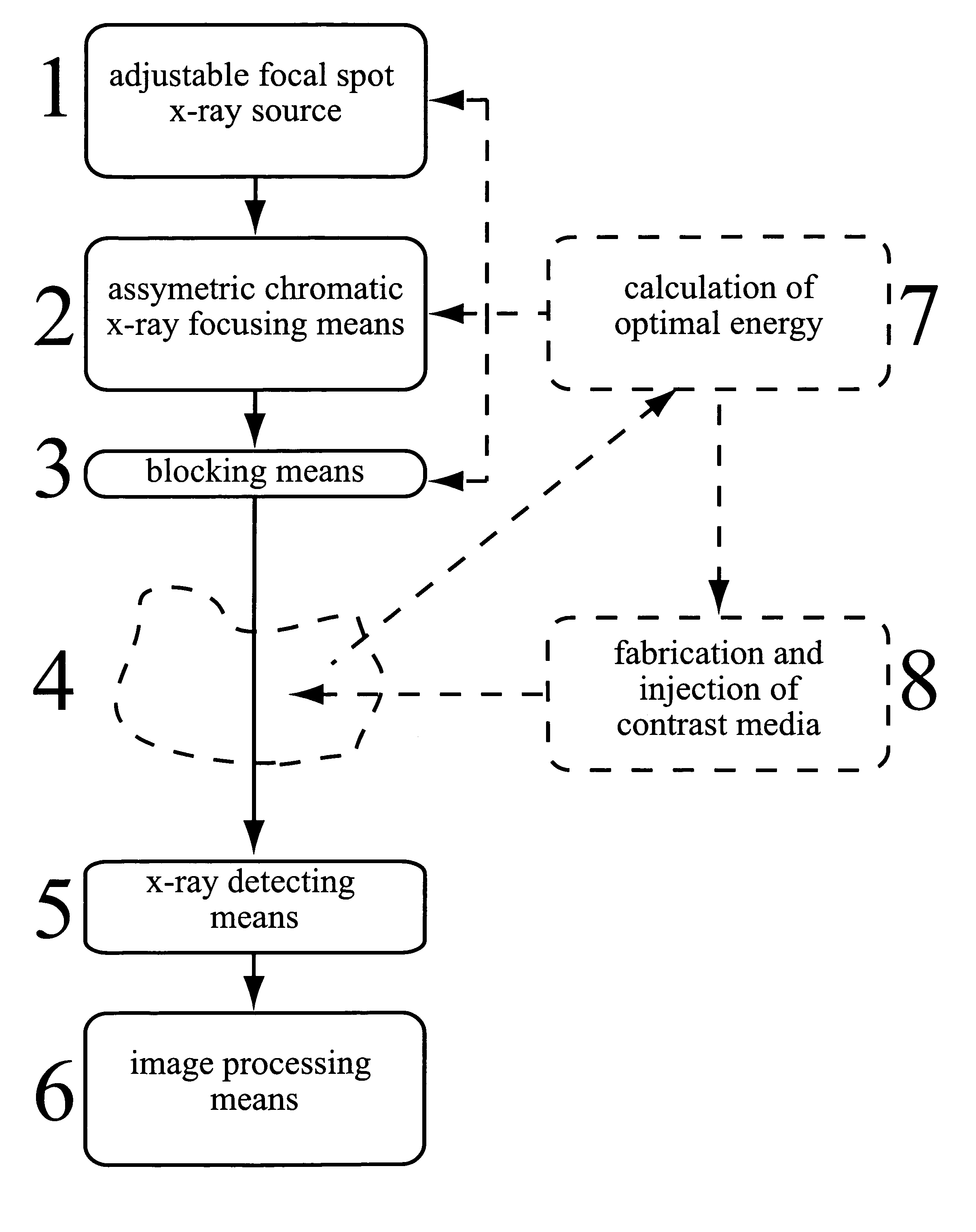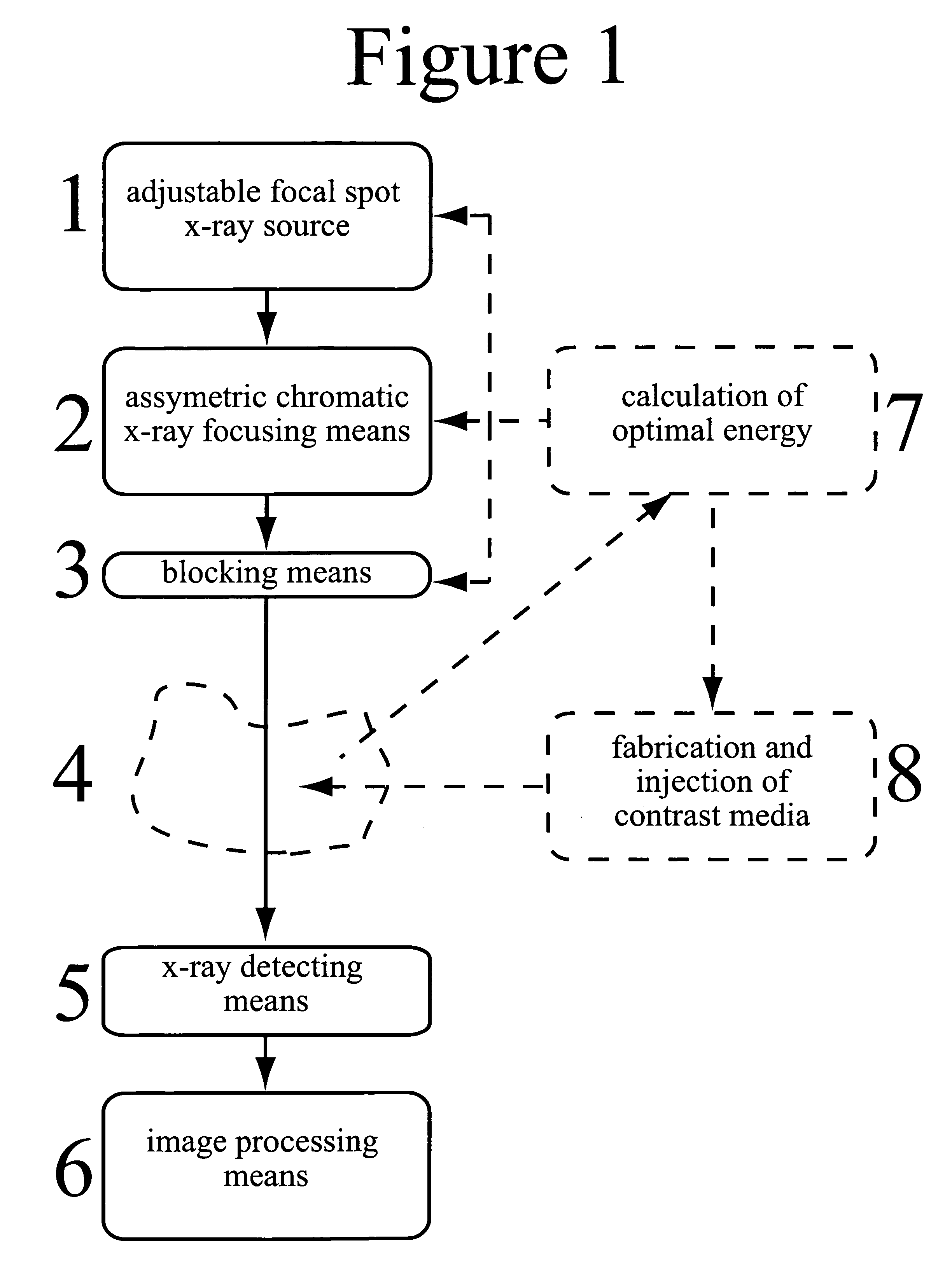X-ray imaging arrangement
- Summary
- Abstract
- Description
- Claims
- Application Information
AI Technical Summary
Benefits of technology
Problems solved by technology
Method used
Image
Examples
Embodiment Construction
[0043] Monochromatic x-ray imaging in general and computed tomography in particular has mainly two advantages compared to conventional polychromatic x-ray imaging [F.A. Dilmanian. Computed tomography with monochromatic x-rays. Am. J. Physiol. Imaging, 3:175-193, 1992]; the first of which is improving the image quality and by that the resolution, and the second one is enhancing the contrast per photon and accordingly minimizing the dose to the object.
[0044] Firstly, a polychromatic beam will be filtered by the object, and since the probability of x-ray absorption decreases with energy, the mean energy of the beam will be shifted towards higher energies by passing the object. This effect is called beam hardening and will cause image artifacts in tomographic imaging because the reconstruction algorithm assumes the signal to be independent of the ray path. Beam hardening can be compensated for by different methods, however only to a certain extent, and the only way to get rid of the ef...
PUM
 Login to View More
Login to View More Abstract
Description
Claims
Application Information
 Login to View More
Login to View More - R&D
- Intellectual Property
- Life Sciences
- Materials
- Tech Scout
- Unparalleled Data Quality
- Higher Quality Content
- 60% Fewer Hallucinations
Browse by: Latest US Patents, China's latest patents, Technical Efficacy Thesaurus, Application Domain, Technology Topic, Popular Technical Reports.
© 2025 PatSnap. All rights reserved.Legal|Privacy policy|Modern Slavery Act Transparency Statement|Sitemap|About US| Contact US: help@patsnap.com



